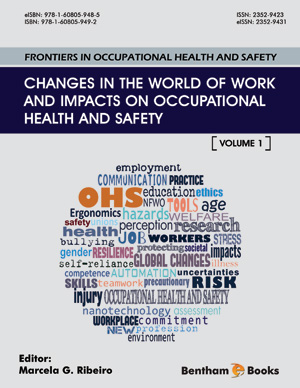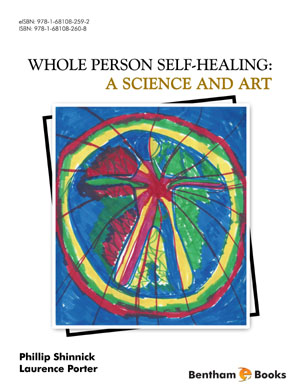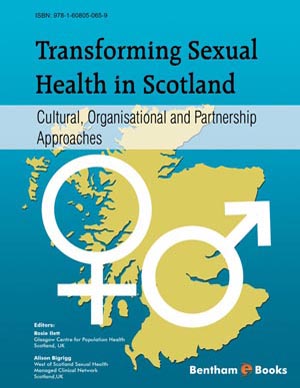Neonatal Care in the USA
Page: 3-25 (23)
Author: Oommen P. Mathew
DOI: 10.2174/978160805113010003
PDF Price: $15
Abstract
Innovations in neonatal care began to occur mostly in the second half the 20th century. Infant mortality rate was 26 per 1000 live births in 1960. By 2000 it has been reduced to 6.9. The preliminary infant mortality rate for 2010 was 6.14 per 1,000 live births. U.S. has high rate of prematurity compared to other developed countries. Preterm birth rate peaked at 12.8 in 2006. It fell in 2010 for the 4th year in a row to 11.99 percent. However, the infant mortality rate for black infants was 11.6 per 1,000 live births, more than twice the rate for white infants. Nevertheless, gestational age specific mortality in the U.S. is similar to that of other developed nations.
Global View of Neonatal Care
Page: 26-44 (19)
Author: Dharmapuri Vidyasagar and Ranganath Daruru
DOI: 10.2174/978160805113010004
PDF Price: $15
Abstract
There is an increasing awareness of the importance of improved neonatal care in reducing infant mortality rates (IMR) across the globe. These ideas are well entrenched in the Millennium Developmental Goals (MDGs) to improve new born care. Lack of availability of skilled health care personnel, lack of proper facilities and lack of equipment in rural areas are the major contributors to high neonatal mortality in developing countries. Since the declaration of MDGs by the United Nation in 2000, a steady progress is being recorded around the world. National programs have been developed to meet MDG target date of 2015. The good news is that fewer women and children (infants and newborns) are dying now than before. Maternal deaths have declined by almost 50% and death of children under five have decreased from 12 million to 7.6 million since 1990. However, much more needs to be done. It is not possible for all countries to reach the targeted goals of MDG 4 and 5 by 2015. Therefore the work must continue with greater vigor in years to come. Finally the contributions of several international programs to promote the Millennium developmental goals particularly the MDG 4 and MDG5 must be recognized. These include: The American International Health Alliance, the Bill and Melinda Gate Foundation, Save the Children, and the UNICEF. These programs have made enormous contributions to scaling up the programs to accelerate reduction of neonatal and infant mortality across the globe.
Law, Medicine and the Neonate
Page: 45-54 (10)
Author: Jonathan M. Fanaroff
DOI: 10.2174/978160805113010005
PDF Price: $15
Abstract
In this chapter we address medico-legal issues that impact practicing neonatologists. While clinicians often mistrust the legal system in general, it is important for them to have basic knowledge of legal concepts. General legal principles are explained, including an overview of the United States Government and the role of both Federal and State Governments. The chapter then discusses medical malpractice, including the requirement that a plaintiff patient prove, by a preponderance of the evidence, that the defendant physician: 1. Owed a duty of care to the patient 2. Breached that duty by failing to meet the standard of care 3. Caused injury through that breach of duty 4. Which then led to compensable damages. There is concern that a difficult malpractice environment for physicians leads to decreased access to care as well as the practice of defensive medicine. Various States have attempted malpractice reforms in a number of ways, including placing caps on non-economic damages. These measures, however, have less impact on neonatologists, due to the fact that injured neonates often have very high lifetime costs of care which are not covered by the caps. It is important for neonatologists to work to improve patient safety by encouraging a ‘culture of safety’ where the focus is on working together to unmask, study, and fix safety problems that can potentially harm patients.
Treatment Decision Making in the NICU: A Moral Analysis
Page: 55-71 (17)
Author: Kristen B. Coggin and John C. Moskop
DOI: 10.2174/978160805113010006
PDF Price: $15
Abstract
This chapter examines two central moral questions regarding treatment decision making in the NICU, namely: “Who should make treatment decisions for neonates?” and “How should treatment decisions for neonates be made?” In response to the first question, we argue that parents should ordinarily have primary decision-making authority for neonates, but that physicians and society also play essential roles in guiding these decisions. In discussing the role of society in such decisions, we review the complex and controversial topic of the Baby Doe regulations. In response to the second question, we point out that, of the three recognized standards for surrogate decision making, only the best interests standard is applicable to the treatment of neonates. We note that the best interests standard provides only very general guidance for surrogate decision makers. Finally, we argue that, contrary to the Baby Doe rules, treatment decisions for infants with life-threatening conditions should be based on both the infant’s prospects for survival and the infant’s current and future quality of life.
Health Care Crisis and Neonatal Care
Page: 72-90 (19)
Author: Oommen P. Mathew
DOI: 10.2174/978160805113010007
PDF Price: $15
Abstract
We have unprecedented national debt and our annual budget deficit is over a trillion dollars. Health care expense is nearly 18% of our gross domestic product. Health insurance premiums continue to rise. There were approximately fifty million uninsured in 2010. The new health care law will decrease the number of uninsured but it does not reduce the cost. Increase in health care expense continues to put additional strain on the system. Hospital care, especially intensive care, is very expensive. The cost of premature birth is estimated to cost over 26 billion dollars a year. Unless we reform the system and reduce the cost of health care, we will face dramatic changes in the delivery of health care with far more adverse consequences than what we face today.
Infants Born at the Margin of Viability
Page: 91-115 (25)
Author: Gautham Suresh and Mary Fay
DOI: 10.2174/978160805113010008
PDF Price: $15
Abstract
Infants born at 22 – 25 weeks gestation are at high risk for mortality and morbidity and are described as borderline or marginally viable. While these infants constitute only a small proportion of neonatal intensive care unit (NICU) admissions, they consume a disproportionate amount of resources and are associated with significant ethical and emotional distress for families and health professionals. Such infants are considered to be in a ‘gray zone’ of decision making, where resuscitation and intensive care are neither universally provided nor universally with held. Instead, individualized decisions about treatment have to be carefully made after discussions between health professionals and the family. Such discussions should follow five guiding principles: use of reliable data, good communication skills, shared decision making, consistent as well as individualized care, and adherence to bioethical principles. Care of such infants should begin in the prenatal period with close collaboration between obstetric and neonatology health professionals. Prenatal decisions involve use of antenatal corticosteroids, fetal monitoring, route of delivery and use of tocolytics. A prenatal consultation by a neonatologist is very beneficial and serves to inform the family about the expected management, potential complications, and outcomes of the infant. It also prepares the parents for the NICU experience, provides emotional support, and facilitates decision-making about interventions for the infant in the delivery room and during subsequent neonatal care. For postnatal management of borderline viable infants three options are available: (1) full resuscitation and intensive care, (2) comfort care only, i.e., not providing resuscitation and subsequent intensive care, but only providing basic neonatal care such as warmth, hygiene and holding by the parents, and (3) resuscitation and initiation of intensive care, with reassessment of the infant’s condition and course, and if considered appropriate, redirection from intensive care to comfort care only. In case of uncertainty it is prudent to initiate treatment. The NICU course of these infants can be prolonged and stressful with many ups and downs, and the family requires ongoing communication and support during this period. Future research should address the use of advance directives for all pregnant women or for those at high risk of delivering a preterm infant.
Complex Cases in Neonatal Care: Severe Birth Defects Involving Multiple Organs
Page: 116-122 (7)
Author: Brian S. Carter
DOI: 10.2174/978160805113010009
PDF Price: $15
Abstract
In this chapter, we address the clinical and ethical issues that are operant in a case of an infant having severe birth defects that involve multiple organs. A single case is presented as a paradigm for alternative actions and the necessary points to consider in their evaluation, management and parental interactions.
Decision Making in Extremely Low Birth Weight Infants with Necrotizing Enterocolitis
Page: 123-131 (9)
Author: Reed A. Dimmitt
DOI: 10.2174/978160805113010010
PDF Price: $15
Abstract
Necrotizing enterocolitis is associated with increased morbidity and mortality. Most preterm infants with NEC are managed medically. The two common surgical interventions for intestinal perforation are exploratory laparotomy and peritoneal drainage. Two cases are presented to illustrate the complicated clinical course and current management at our institution.
Severe Birth Asphyxia: Acute and Long-Term Care
Page: 132-145 (14)
Author: Frank X. Placencia
DOI: 10.2174/978160805113010011
PDF Price: $15
Abstract
In this chapter, we review neonatal hypoxic-ischemic encephalopathy (HIE), including its natural history, diagnosis, management, and prevention strategies, and the bioethical and medico-legal challenges surrounding this condition. Amongst term infants, neonatal HIE remains a common cause of mortality, however HIE attributable to intrapartum hypoxia is rare. Therapeutic hypothermia has shown promise in reducing the long term neurologic sequelae, which include cerebral palsy, developmental delay, and visual and auditory impairment. Infants with severe sequelae require considerable medical, financial, and familial resources throughout their life. Strategies to prevent intrapartum HIE have been widely adopted, though with mixed results. Meanwhile the fear of litigation has had significant negative effects on obstetric management and willingness to practice. Medical associations have established guidelines to aid in the identification of those infants with HIE due to an intrapartum event. Prognostic uncertainty, especially in the first weeks of life, remains a major challenge in management of these infants. Withdrawal of life sustaining treatment (LST) may be ethically appropriate in selected cases; however the time period wherein the infant is most dependent on LST to survive overlaps the period of prognostic uncertainty, making such decisions difficult. These decisions are best made in conjunction with the family and in an ethically rigorous and systematic fashion.
ECMO: Cost, Controversy and Ethics
Page: 146-154 (9)
Author: Jatinder S. Bhatia and Linda J. Wise
DOI: 10.2174/978160805113010012
PDF Price: $15
Abstract
Extracorporeal Life Support is used routinely in infants, children and adults today. It is a labor intensive and costly treatment option. Two cases are presented to illustrate the complexity of decision making process.
Multifetal Gestation
Page: 155-184 (30)
Author: Michael V. Zaretsky
DOI: 10.2174/978160805113010013
PDF Price: $15
Abstract
Multifetal gestation accounts for a small percentage of births but results in significant perinatal morbidity and mortality. In this chapter the differences between a singleton and multifetal gestation will be elucidated. The presence of more than one fetus results in increasing risks for both mother and each fetus. Preterm birth is of greatest concern, however unique and rare complications may occur resulting in significant challenges for providers. Because of the significant cost to both patients and to society as a whole, there are ongoing efforts to limit the number of multiples derived through assisted reproductive technology.
Solutions: Is there a Light at the End of the Tunnel?
Page: 185-212 (28)
Author: Oommen P. Mathew
DOI: 10.2174/978160805113010014
PDF Price: $15
Abstract
We know that we spend more on health care than any other nation. Still, we have 50 million uninsured and very low rank among the industrialized nations for health care outcome such as infant mortality rate. With ballooning national debt and trillion dollar annual federal budget deficits, we are on an unsustainable trajectory in health care spending. Fortunately, our health care delivery system is changing. Some of the changes are the result of the new health care law, while others are the result of adaptation of new technology. The pace of penetration of technology is still lower in health care when compared to other areas. Some of the fragmentation of health care and operational inefficiencies will be reduced by the adaptation of new technologies. Although it involves large initial investments, significant long term benefits are likely. Policy and regulatory changes at various levels are also needed. Mergers and acquisition among providers are already occurring resulting in vertical and horizontal integration of health systems. Relatively small percentage of patients with multiple chronic conditions accounts for the vast majority of health care expenses. Incentives for individuals and providers are being developed to better manage chronic conditions and wellness care. Quality and outcome can be improved by the use of practice guide lines and check lists while reducing costs and improving outcome. Using technology and other tools to monitor health status of at risk individuals can result in early detection of complications so that they can be treated at home reducing hospitalization, emergency department visits and lower use of specialist services. Another low hanging fruit is tort reform. Defensive medicine accounts for up to 4% of the expenses. We need to modernize tracking of health care expenses through technology reducing administrative expenses, as well as waste and fraud. With this background, we compare and contrast the delivery of neonatal care.
Introduction
Health care in the US is facing a crisis, but there is polarization and disagreement among policy makers and the public about how to solve this crisis. The overall outcome is ranked much lower than most developed nations and nearly 50 million people are uninsured. Health care is big business and is 17 % of the gross domestic product. Inside Health Care highlights the lifesaving nature of neonatal care while shining some light on what can be done to maximize neonatal well being and efficiency in healthcare access and delivery. In this book, health care issues are brought under the lens by physicians who are involved in neonatal care which gives a the reader an authentic, yet unique perspective. The contributors also offer potential solutions to highlighted issues. Readers will be able to understand the current status of neonatal care in the US and the issues facing decision makers and the health care industry in optimizing outcomes while limiting costs.












